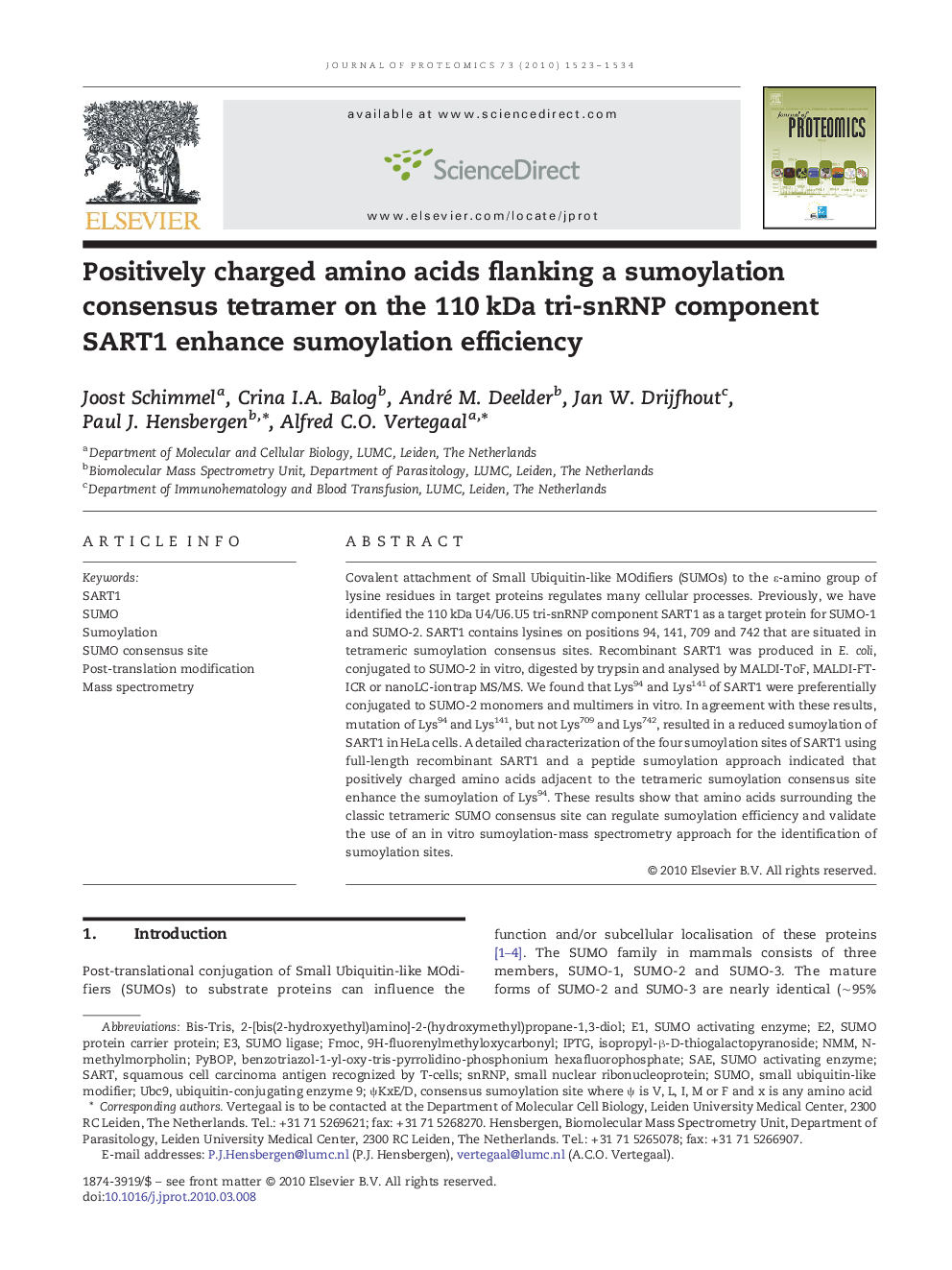| Article ID | Journal | Published Year | Pages | File Type |
|---|---|---|---|---|
| 10556388 | Journal of Proteomics | 2010 | 12 Pages |
Abstract
Covalent attachment of Small Ubiquitin-like MOdifiers (SUMOs) to the ε-amino group of lysine residues in target proteins regulates many cellular processes. Previously, we have identified the 110 kDa U4/U6.U5 tri-snRNP component SART1 as a target protein for SUMO-1 and SUMO-2. SART1 contains lysines on positions 94, 141, 709 and 742 that are situated in tetrameric sumoylation consensus sites. Recombinant SART1 was produced in E. coli, conjugated to SUMO-2 in vitro, digested by trypsin and analysed by MALDI-ToF, MALDI-FT-ICR or nanoLC-iontrap MS/MS. We found that Lys94 and Lys141 of SART1 were preferentially conjugated to SUMO-2 monomers and multimers in vitro. In agreement with these results, mutation of Lys94 and Lys141, but not Lys709 and Lys742, resulted in a reduced sumoylation of SART1 in HeLa cells. A detailed characterization of the four sumoylation sites of SART1 using full-length recombinant SART1 and a peptide sumoylation approach indicated that positively charged amino acids adjacent to the tetrameric sumoylation consensus site enhance the sumoylation of Lys94. These results show that amino acids surrounding the classic tetrameric SUMO consensus site can regulate sumoylation efficiency and validate the use of an in vitro sumoylation-mass spectrometry approach for the identification of sumoylation sites.
Keywords
Related Topics
Physical Sciences and Engineering
Chemistry
Analytical Chemistry
Authors
Joost Schimmel, Crina I.A. Balog, André M. Deelder, Jan W. Drijfhout, Paul J. Hensbergen, Alfred C.O. Vertegaal,
